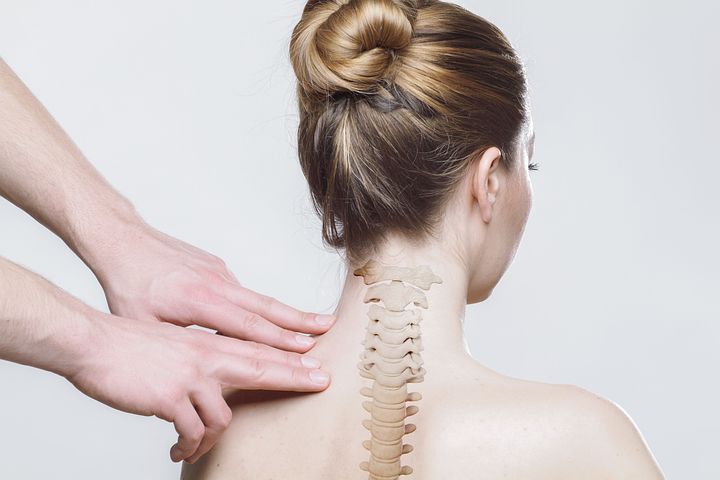Many physiotherapists find it challenging to determine the direction in which the spine should be mobilized or manipulated in patients with painful radiculopathies.
There are 2 methods to detect the correct direction, the first one is using the H-reflex method described by Mohamed Sabahhi (1-5), another one is using pre-manipulative (vascular screening and repeated movement) testing described by Robin McKenzie (6-8). Both are good clinical tools, but the first one is more objective and measurable.
The challenge with pre-manipulative testing using McKenzie’s method is that the selection of the movement direction for mobilization and/or manipulation techniques is not based on an objective recording of the neural compromise. This may result in possible injury to the nerve roots causing aggravation of symptoms or even adverse events such as drop-foot or saddle anesthesia etc.
Sabahhi et al. (1-5) have described an innovative method to direct treatment objectively for spinal patients with neural compromise components. These tests provide information that can lead to the implementation of effective personalized treatment strategies.
For instance, the procedure is based on testing the latency and amplitudes of H-reflex of spinal patients in static positions (lying and free standing) and during eight different trunk postures (right-side bend (RSB), left-side bend (LSB), backward bend (BB), forward bend (FB), right rotation (RR), left rotation (LR), right-side bend and left rotation (RSB + LR), and left-side bend and right rotation (LSB + RR) or at cervical different head postures used ( neutral, extension, flexion, left-side bending, right-side bending, protraction, retraction, left-rotation, right-rotation).
The H-reflex latency has been used to detect the delayed signal due to neural root degeneration while the amplitude detects axonal dysfunction. The H-reflex amplitude was measured to evaluate the degree of axonal compression/decompression during trunk static and dynamic procedures. These findings implicate that spinal mobilization and manipulation should be carried out based on EMG studies of H-reflexes to ensure patient safety, accuracy, and effectiveness of treatment procedures (9-11). Therefore, controlled acts, such as high-velocity low-amplitude spinal manipulation, can be applied to carefully selected patients using H-reflex testing (9-11).
References:
- Alrowayeh, H.N., Sabbahi, M.A., 2011. H-reflex amplitude asymmetry is an earlier sign of nerve root involvement than latency in patients with S1 radiculopathy. BMC Res. Notes. 4, 102.
- Alrowayeh HN, Sabbahi MA, Etnyre B: Soleus and vastus medialis H-reflexes: Similarities and differences while standing or lying during varied knee flexion angles. J Neurosci Methods 2005, 144:215-225.
- Sabbahi, M.A., Khalil, M., 1990. Segmental H-reflex studies in upper and lower limbs of patients with radiculopathy. Arch. Phys. Med. Rehabil. 71 (3), 223–227.
- Mohamed A. Sabbahi, Fikriye Ovak-Bittar. 2018. Electrodiagnosis-based management of patients with radiculopathy: The concept and application involving a patient with a large lumbosacral disc herniation. Clinical Neurophysiology Practice 3, 141-147.
- Sabbahi, M.A., Khalil, M., 1990. Segmental H-reflex studies in upper and lower limbs of healthy subjects. Arch. Phys. Med. Rehabil. 71 (3), 223–227.
- McKenzie R, May S. The lumbar spine: mechanical diagnosis and therapy. 2nd ed. Waikanae: Spinal Publication Ltd; 2003.
- McKenzie RA. The Lumbar Spine: Mechanical Diagnosis and Therapy. Waikanae, New Zealand: Spinal Publications; 1990.
- McKenzie R, May S. The cervical and thoracic spine: mechanical diagnosis and therapy. 2nd ed. Waikanae: Spinal Publications; 2006.
- Edwards, B.C. 1979. Combined Movement of the Lumbar Spine, Examination and Clinical Significance. Aust. J. Physiother. 25:4.
- Edwards BC. Combined movements in the cervical spine (c2-7) and their value in examination and technique choice. Aust J Physiother. 1980 Oct;26(5):165-71.
- Maigne, R. (1965). “Concept of Painlessness and Opposite Motions in Spinal Manipulation”. American Journal of Physical Medicine, 44:55-69.
